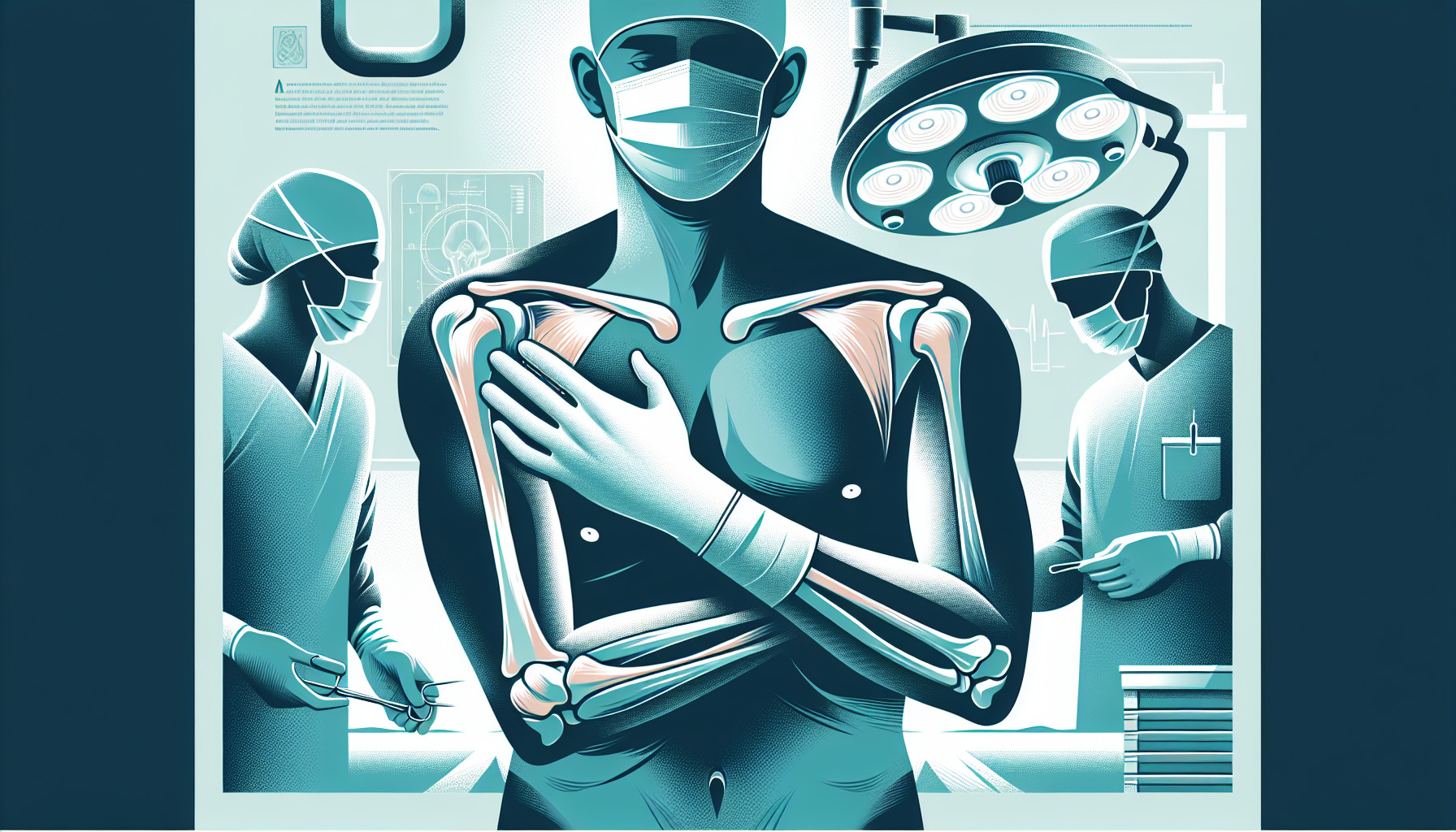Our Summary
This research paper is about a type of shoulder replacement surgery called reverse shoulder arthroplasty (RSA). This surgery has been shown to work well in cases where the rotator cuff (the group of muscles and tendons that provide shoulder movement) is damaged. However, it wasn’t clear how well it worked when the rotator cuff was still intact but the person had shoulder osteoarthritis, a condition where the protective cartilage on the ends of bones wears down, causing pain and limiting movement.
The researchers looked at previous studies to see how well RSA worked in these circumstances. They specifically looked at whether changes in the shape of the shoulder socket (glenoid) led to worse outcomes. They found that RSA did lead to improvements in shoulder function and had a low complication rate. This was true even in cases where the shape of the shoulder socket had changed due to the arthritis.
They concluded that RSA might be a good treatment option for people with shoulder osteoarthritis who still have an intact rotator cuff. They also noted that the RSA procedure can handle changes to the shoulder socket caused by arthritis, which can make it a more effective treatment option for this condition.
FAQs
- What is reverse shoulder arthroplasty (RSA) and why is it used?
- Can RSA improve shoulder function in patients who still have an intact rotator cuff but suffer from shoulder osteoarthritis?
- How does the RSA procedure handle changes to the shape of the shoulder socket caused by arthritis?
Doctor’s Tip
A helpful tip a doctor might tell a patient about shoulder replacement, particularly reverse shoulder arthroplasty, is to follow a structured rehabilitation program after surgery. This program is designed to help improve shoulder function, strength, and range of motion, while also reducing the risk of complications. It is important for patients to attend physical therapy sessions regularly, perform prescribed exercises at home, and follow any other recommendations provided by their healthcare team to achieve the best possible outcome from the surgery.
Suitable For
Patients who are typically recommended for shoulder replacement surgery, specifically reverse shoulder arthroplasty, include those with:
Rotator cuff tears: RSA is often recommended for patients with irreparable rotator cuff tears, where the muscles and tendons surrounding the shoulder joint are damaged and unable to provide adequate support and function.
Shoulder osteoarthritis: Patients with shoulder osteoarthritis, where the protective cartilage on the ends of bones in the shoulder joint wears down, causing pain and limited movement, may benefit from RSA to improve shoulder function and alleviate symptoms.
Failed previous shoulder surgeries: Patients who have undergone unsuccessful shoulder surgeries in the past may be recommended for RSA to address ongoing pain and dysfunction in the shoulder joint.
Fractures or traumatic injuries: Individuals who have experienced severe fractures or traumatic injuries to the shoulder joint that have resulted in significant damage may be candidates for RSA to restore function and stability.
Chronic shoulder pain and dysfunction: Patients with chronic shoulder pain and dysfunction that has not responded to conservative treatments such as physical therapy, medication, or injections may be considered for RSA to improve their quality of life and mobility.
Overall, individuals who have significant shoulder joint damage, pain, and functional limitations that impact their daily activities and quality of life may be recommended for shoulder replacement surgery, including reverse shoulder arthroplasty. It is important for patients to consult with their healthcare provider to determine the most appropriate treatment option based on their specific condition and individual needs.
Timeline
Before shoulder replacement:
- Patient experiences chronic shoulder pain, limited range of motion, and difficulty performing daily activities
- Patient undergoes a physical examination, imaging tests, and consultation with a surgeon to determine the need for shoulder replacement surgery
- Pre-operative preparations, including medical clearance, physical therapy, and education on the surgery and recovery process
After shoulder replacement:
- Patient undergoes reverse shoulder arthroplasty surgery, which involves replacing the damaged shoulder joint with artificial components
- Post-operative recovery period, including pain management, physical therapy, and follow-up appointments with the surgeon
- Gradual improvement in shoulder function, pain relief, and range of motion over the following months
- Long-term follow-up care to monitor the success of the surgery and address any complications or concerns
What to Ask Your Doctor
Some questions a patient should ask their doctor about shoulder replacement, specifically reverse shoulder arthroplasty for osteoarthritis with an intact rotator cuff, include:
- What are the potential risks and complications associated with reverse shoulder arthroplasty for shoulder osteoarthritis with an intact rotator cuff?
- What is the success rate of reverse shoulder arthroplasty in cases like mine, where the rotator cuff is intact but the shoulder socket may be affected by arthritis?
- How long is the recovery process after reverse shoulder arthroplasty, and what can I expect in terms of pain and mobility during the recovery period?
- Will I need physical therapy or rehabilitation after the surgery, and if so, what will that involve?
- How long can I expect the results of the reverse shoulder arthroplasty to last, and are there any long-term considerations I should be aware of?
- Are there any alternative treatment options for my condition, and how does reverse shoulder arthroplasty compare to these alternatives in terms of effectiveness and recovery time?
- What is the experience and expertise of the surgeon who will be performing the reverse shoulder arthroplasty, and how many of these procedures have they performed successfully in the past?
- What lifestyle changes or modifications may be necessary after the surgery to ensure the best possible outcome?
- Are there any restrictions or limitations on activities that I should be aware of after undergoing reverse shoulder arthroplasty?
- How can I best prepare for the surgery, both physically and mentally, to ensure a successful outcome?
Reference
Authors: Heifner JJ, Kumar AD, Wagner ER. Journal: J Shoulder Elbow Surg. 2021 Dec;30(12):2895-2903. doi: 10.1016/j.jse.2021.06.010. Epub 2021 Jul 20. PMID: 34293419
